 |
 |
 |
| |
Drug Resistance is USA & Europe: 2 studies at CROI 2020
|
| |
| |
Reported by Jules Levin
- FOUR-CLASS RESISTANCE IS RARE IN TREATMENT-EXPERIENCED PATIENTS ACROSS EUROPE, see below following USA study
- TRENDS AND CHARACTERISTICS OF HIV-1 DRUG RESISTANCE IN THE UNITED STATES (2012-2018)
Cassidy E. Henegar1, Mark Underwood1, Leigh Ragone1, Harmony Garges2, Vani Vannappagari1 1ViiV Healthcare, Research Triangle Park, NC, USA,2ViiV Healthcare, London
UKePoster Video Link: http://www.croiwebcasts.org/p/2020croi/croi/521-PS
from program Abstract:
Of 84,611 samples evaluated, 27,911 (33.0%) demonstrated reduced susceptibility to at least one ARV. Between 2012 and 2018, resistance to NRTIs (54.8% to 40.8%) and PIs (14.7% to 8.3%) steadily declined. The proportion of samples with reduced susceptibility to at least one INSTI decreased between 2012 and 2015 (20.3% to 14.0%), stabilizing from 2015 to 2018. Multiclass (2 ARV classes) resistance declined between 2012 and 2018. The proportion of resistant samples with 2-, 3-, and 4-class resistance, respectively, decreased from 33.5% to 21.9%, 11.3% to 5.5%, and 3.1% to 1.1%. (Figure) This trend corresponds to increasing proportions of samples with resistance to NNRTIs in the absence of NRTI, PI, and INSTI resistance (2012-2018: 36.2% to 52.6%). Among samples with multiclass resistance, 78.7% were still susceptible to at least 1 ARV in the NNRTI class, 93.4% to 1 NRTI, 97.9% to 1 PI, and 93.7% to 1 INSTI; of these, 29.1% were susceptible to a single INSTI. The proportion of resistant samples with reduced susceptibility to multiple ARV classes increased with older age (21-30 yrs: 21.5%; 31-40: 30.4%; 41-50: 38.1%; 51-60: 41.4%; >60: 42.4%). No associations between degree of resistance and gender or geographic region were observed.

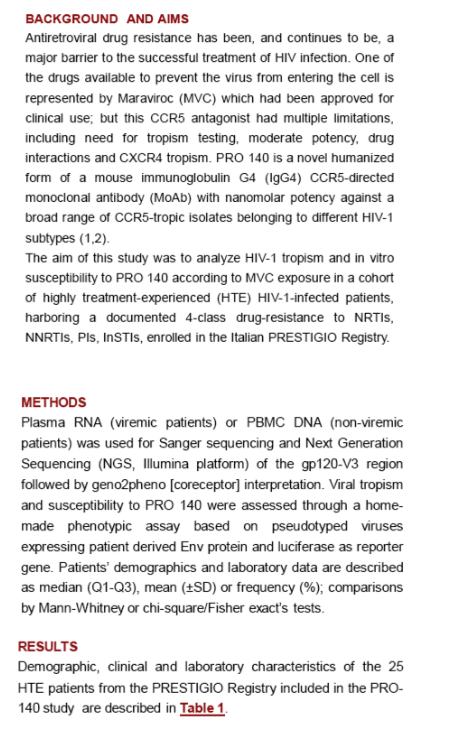
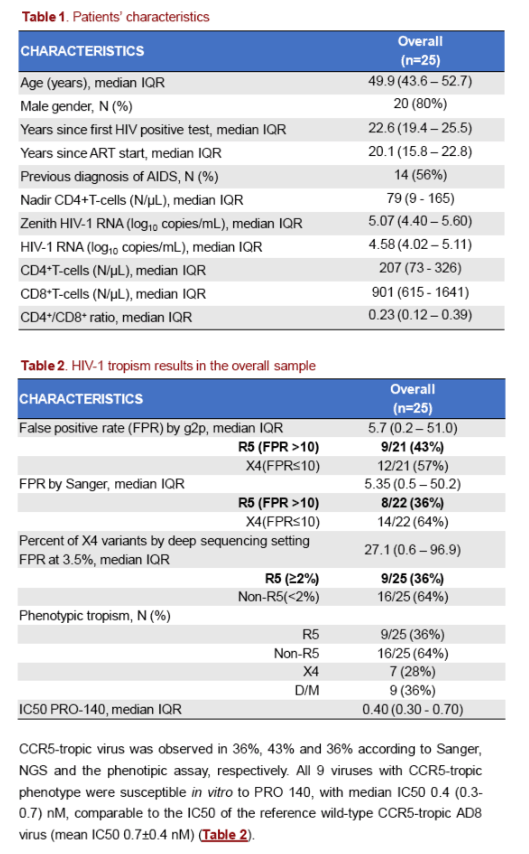
--------------------------------
FOUR-CLASS RESISTANCE IS RARE IN TREATMENT-EXPERIENCED PATIENTS ACROSS EUROPE
CROI 2020
Reported by Jules Levin
Jurgen Vercauteren1, Anne-Mieke Vandamme2, Barbara Rossetti3, Massimiliano Fabbiani3, Francesca Incardona4, Kristof Theys2, Ana Abecasis5, Carole Devaux6, Rolf Kaiser<
1Rega Institute for Medical Research, Leuven, Belgium,2Katholieke University Leuven, Leuven, Belgium,3Siena University Hospital, Siena, Italy,4EuResist Network, Rome, Italy,5Instituto de Higiene e Medicina Tropical Universidade NOVA de Lisboa, Lisboa, Portugal,6Centre Hospitalier de Luxembourg, Luxembourg, Luxembourg,7University of Cologne, Cologne, Germany,8Karolinska Institute, Stockholm, Sweden,9University of Siena, Siena, Italy
Abstract Body:
While most HIV-1 patients starting antiretroviral therapy (ART) in recent years achieve and maintain undetectable viral load, patients with a long ART history and failure of multiple therapy lines may have accumulated substantial drug resistance, challenging the possibility for virus control both at individual and population level. However, the prevalence of patients harboring virus with resistance to the four main drug classes (4CR) is largely unknown.
From the EuResist database, we selected treated patients with protease, reverse transcriptase and integrase genotype information available at one or more time points. HIV-1 sequences were interpreted by the Stanford HIVdb 8.8 algorithm and cumulative scores were generated at each sequencing time point. 4CR was defined as high-level resistance to at least one drug in each of the four classes. The frequency of 4CR at each calendar year was estimated as the number of unique patients with 4CR divided by the number of unique patients with at least one sample, up to that year.
Complete four classes HIV-1 genotype information was available from 2643 distinct patients on ART contributing 3544 genotype data from Italy (49.9%), Germany (24.7%), Portugal (8.1%), Luxembourg (7.5%), Sweden (7.0%) and Belgium (2.7%). 66% were male and risk groups included 45.3% MSM, 18.6% drug users and 18.3% heterosexuals. Subtype B virus was harbored by 70.1% of patients and the most prevalent non-B subtypes were G (14.0%) and A1 (7.5%). Overall, 65 patients (2.5%) had 4CR. The prevalence of 4CR declined from 5.6% [95%CI: 1.6-13.8] in 2008 to 2.4% [95%CI: 1.8-3.1] in 2018 (P <0.001, chi-square test for trend; see figure). Patients with 4CR were older (49+/-12 vs. 46+/-11, P = 0.001) and harbored more often subtype B virus (85.3% vs. 69.7%, P = 0.013) with respect to patients without 4CR. No association was demonstrated between 4CR and gender or risk groups.
In a large population of patients across Europe with complete HIV-1 genotype information, the prevalence of 4CR appears to be relatively low and possibly declining over recent years. Continuous surveillance of this challenging population is warranted to provide effective treatment at the individual level and define factors predicting accumulation of resistance over time.
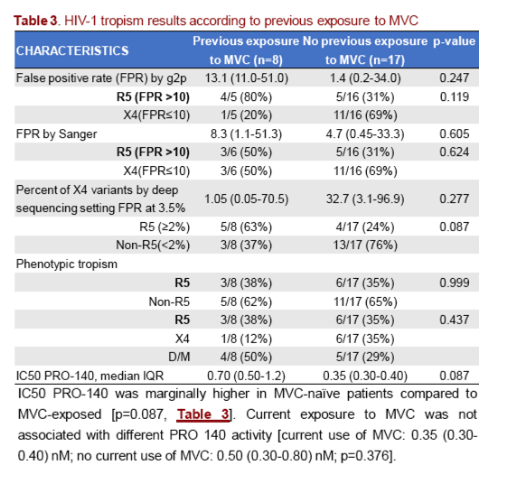
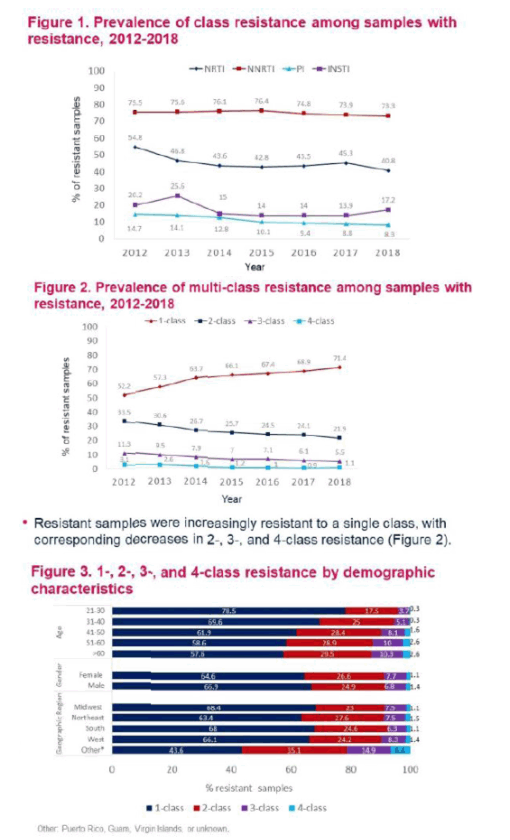
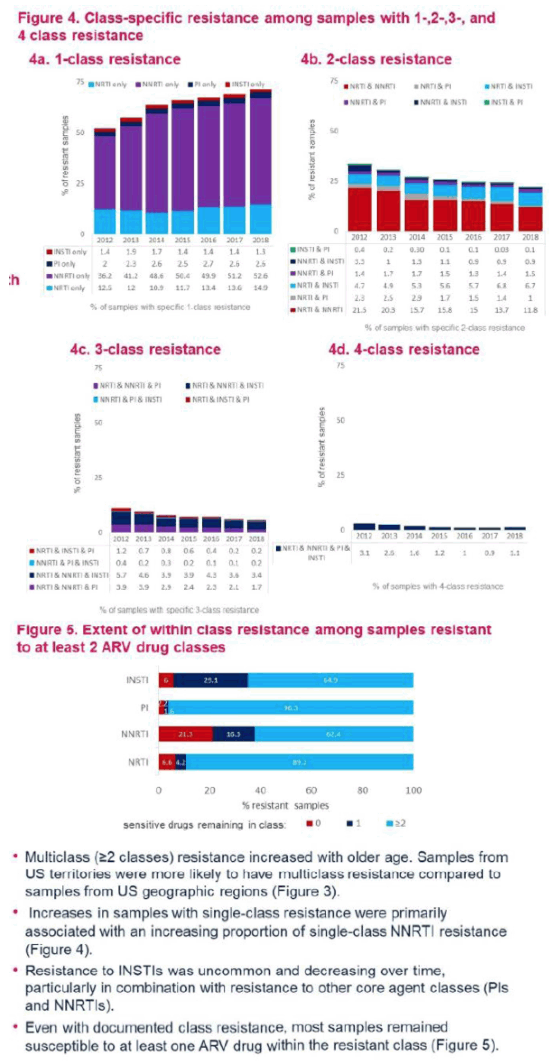
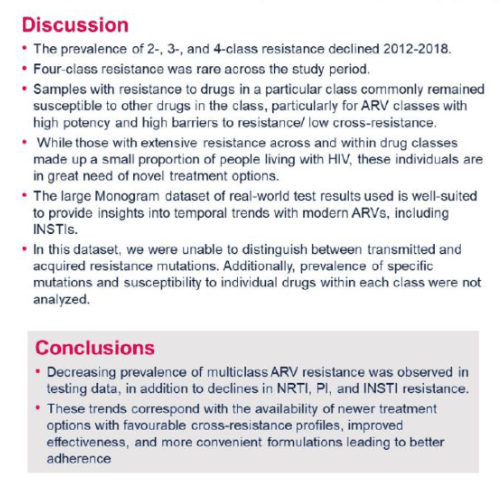
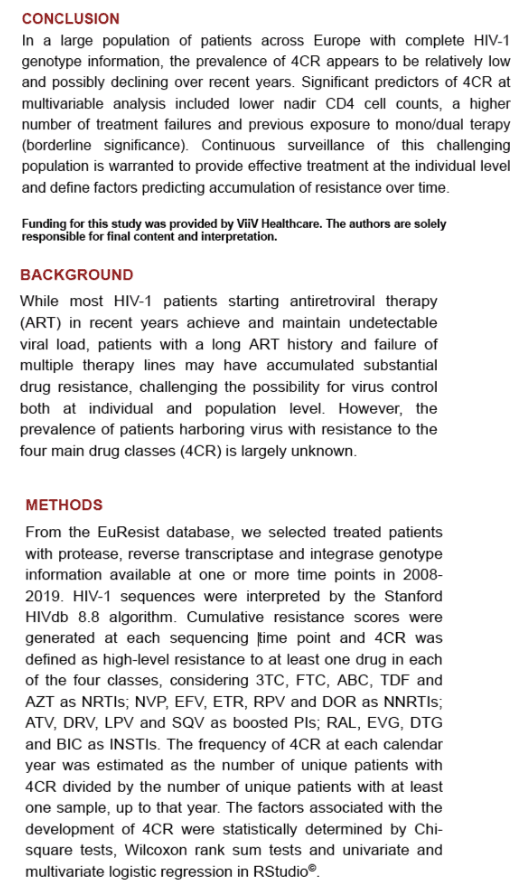
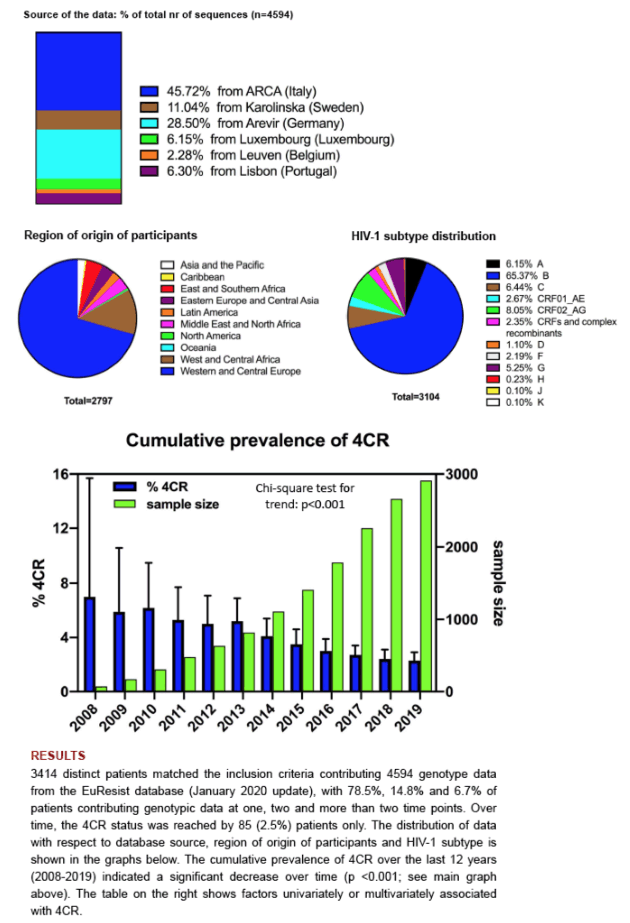

|
| |
|
 |
 |
|
|